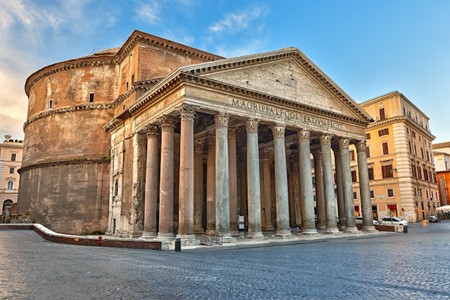Ancient Concrete: How it Stood the Test of Time
By Dale Andrews
Introduction
Concrete is a widely used building material today due to its strength, durability, and versatility. However, the history of concrete dates back to ancient times when the Romans, Greeks, and Egyptians developed their own versions of concrete that allowed them to construct impressive structures, many of which still stand today. The concrete used by these ancient civilizations, which we’ll reference as ancient concrete, was composed of different materials than the Portland cement-based concrete commonly used today.
Early Development and Evolution
The oldest known example of concrete construction comes from the ancient Egyptians. The Egyptians used a type of concrete made from a mixture of mud, straw, and gypsum to build their pyramids, the oldest of which was built over 4,500 years ago. However, this early type of concrete was relatively weak compared to more modern examples of concrete, such as that later developed by the Greeks and Romans.
Roman concrete had lasting strength and durability due to its use of a material called "pozzolana," which is a type of volcanic rock found near Pozzuoli, a city found in the Bay of Naples, Italy. Roman concrete consisted of a mixture of volcanic ash, lime, and local aggregate, and it was used to build many of the most important structures in ancient Rome. For example, the Colosseum, constructed with Roman concrete, is still standing today, almost 2,000 years after it was built, which is a testament to the durability of ancient concrete.
Ancient Concrete’s Reliance on Quicklime
Quicklime played a critical role in the strength and durability of ancient concrete. Quicklime, combined with seawater, provided the heat and high pH necessary to react with the naturally present alumina and silicates contained within the pozzolana ash and other calcium rich minerals to create a high temperature mortar. This mortar was then mixed with volcanic rock and other locally sourced sand and aggregate to form the now celebrated conglomerate-like Roman concrete.
The Pozzolanic Reaction
When quicklime and pozzolan react with water, a complex chemical process takes place that results in the formation of a cementitious material. The calcium oxide in quicklime reacts with water to form calcium hydroxide, which then reacts with the silica and alumina in the pozzolan to produce calcium silicate hydrates (C-S-H) and calcium aluminate hydrates (C-A-H), which are the primary binding agents in cement. This reaction, known as the pozzolanic reaction, also produces significant heat and releases hydrogen gas. The C-S-H and C-A-H bind together to form a strong, durable material that hardens over time. The chemical reaction between quicklime and pozzolan is highly complex and depends on a variety of factors, including the type and composition of the pozzolan, the temperature and humidity, and the presence of other minerals or additives to form a highly durable binding material.
Ancient Concrete vs. Modern Concrete
One of the key differences between ancient concrete and modern concrete is the use of quicklime with “pozzolana” or other volcanic materials, which improved the durability and strength of ancient concrete. Its unique chemistry gave this ancient concrete the ability to autogenously heal through a remineralization process. It is believed that this would occur for up to years after the concrete was placed as seawater penetrated the pores would continue to react with the newly exposed volcanic ash and lime forming new calcium-aluminum-silicate-hydrate minerals within the cracks and voids, which significantly added to the concrete’s durability.
In contrast, Portland cement-based concrete uses Portland cement as a binding material. Portland cement is made from a mixture of limestone, clay, and other materials that are heated to high temperatures in a kiln. This process produces a material called clinker, which is ground up and mixed with gypsum to form Portland cement.
While Portland cement-based concrete is strong and durable, it is simply not as long-lasting as ancient concrete. This is because Portland cement-based concrete is more susceptible to chemical and physical degradation over time, especially when exposed to environmental factors such as salts and freeze-thaw cycles. However, Portland cement-based concrete is made from readily available materials such as limestone, clay, and other minerals, making it more accessible and less expensive than pozzolana-based concrete, which required the importation of materials like volcanic ash from specific locations. Additives today also allow modern concrete to be formulated to resist specific environmental factors like freeze-thaw cycles or chemical exposure.
Conclusion
The development of ancient concrete by the Egyptians, Greeks, and Romans was a significant achievement that allowed them to build impressive structures that still stand today. The use of Pozzolana or other volcanic materials, combined with the use of quicklime, allowed ancient concrete to be strong, durable, and long-lasting.
The legacy of ancient concrete continues to inspire researchers and engineers to study the properties and durability of construction materials, and the use of quicklime in various applications underscores the value of innovation and experimentation in solving engineering challenges.
Ancient Concrete Example: Pantheon 25BC
Modern Concrete - 1973

Excellent!
Very interesting article here Dale. Thanks! Question - How do you date concrete?